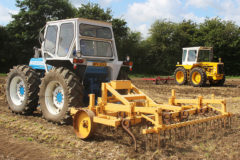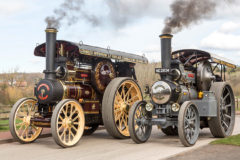A rare survivor: 1983 Ford A Series
Posted by Chris Graham on 16th August 2022
Peter Simpson tells the story of Ford’s 1970s A Series, and tracks down a rare survivor for a closer look.
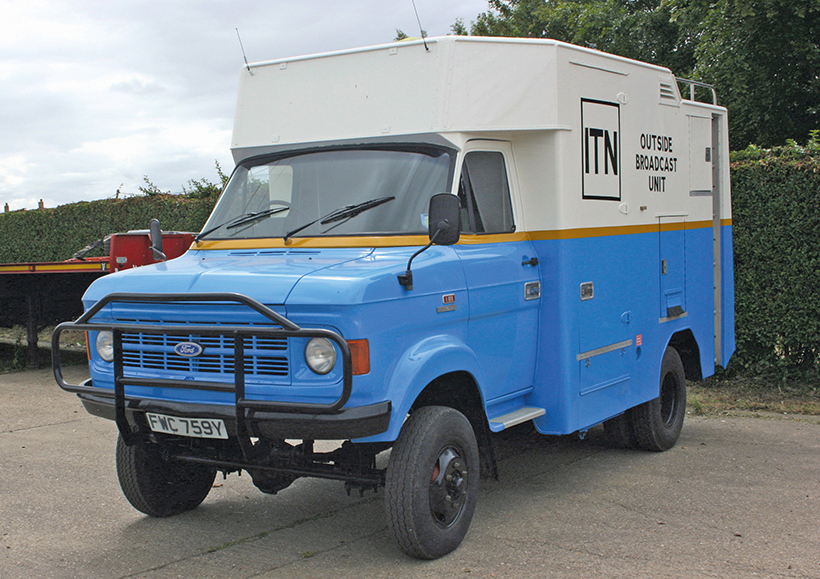
Kevin Dennis’ 1983 Ford A Series; a rare survivor.
Over the years Ford have built their success largely on producing the vehicles that people want – and this applies as much to the commercial vehicles as the car side. Unlike some sections of the British industry, they didn’t prescribe what people should want or take their dealers word for what would sell – a slightly arrogant practice which was in part responsible for BMC’s demise. Rather, they took the trouble to go out and find out for themselves.
When this worked – as in most cases it did – the vehicles involved sold well. Some even changed the course of motoring. In the UK, the Ford Cortina concept came about through talking to fleet managers and other bulk-buyers, and they soon discovered that while BMCs revolutionary new FWD set-up was very impressive technically and appealed to private motorists who appreciated the acres of interior space it gave, fleet managers were less impressed. They’d quickly realised that FWD reliability was far from 100%, and that wasn’t what this cost-conscious market-sector wanted.
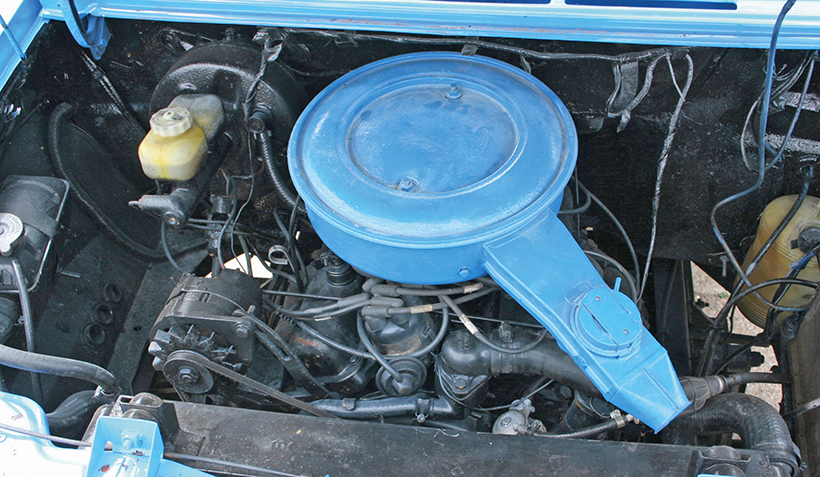
The 3-Litre V6 petrol engine, as used in contemporary Ford cars. Probably quite thirsty, but at least it would start from cold.
Hence the Cortina, a car with up to the minute styling and, to save money both in construction and operation, a lightweight body. Plus, most importantly of all, conventional and straightforward mechanicals.
When it came to replacing the Ford Thames 400E range, Ford again researched the market properly and talked to end-users. They even watched vans being loaded at building yards, and quickly noticed that few current vans could fit a standard-sized sheet of plasterboard flat between the rear wheelarches, so they made sure the Transit could.
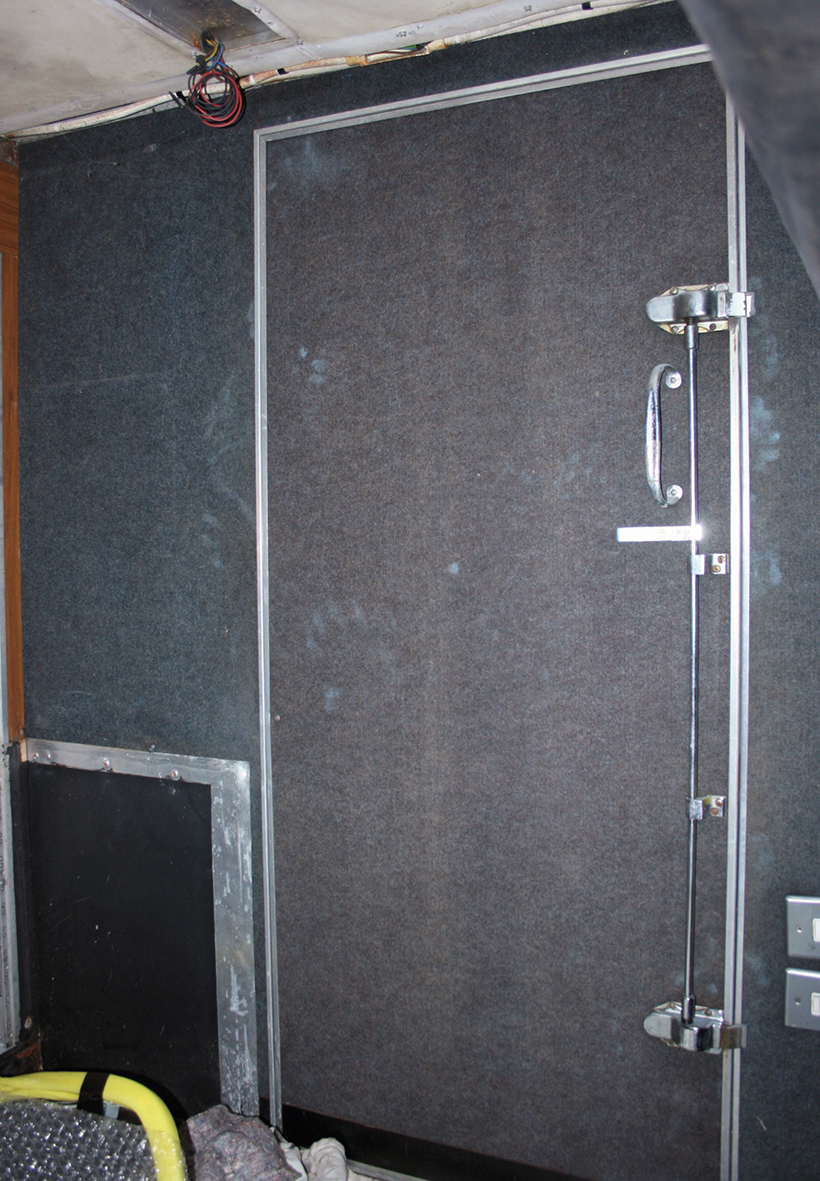
All the original sound-deadening insulation remains in place.
It worked – the Ford Transit was a runaway success; the van everyone wanted and which changed the face of the light van market to the extent that the name became almost-synonymous with a 15-19cwt van.
As I say, nine times out of ten, Ford’s research hit the mark. Occasionally though, they get it wrong, and when the Blue Oval boobs, it’s does so spectacularly. Following Ford’s Edsel debacle, the phrase ‘doing an Edsel’ passed almost into common usage to describe a flop. Here in the UK, the early-sixties Ford Classic flopped and despite massive pre-launch publicity, was dead within three years – though to be fair it was largely the Cortina’s success that did for the Classic.

Interior remains basically as purchased and as decommissioned.
But on the commercial vehicle side, the vehicle which probably takes the prize for Ford’s greatest ‘heroic failure’ is the early-1970s A Series.
Go between Ford
The idea was sound. Ford’s researchers had identified that there was a type of buyer for whom a Transit was too small but who didn’t want, or really need, a 7 ½ ton D Series lorry. Research started in 1967, the decision to build an in-between vehicle was confirmed in 1970, design started in 1971, and the range was introduced in September 1973. The sales brochure set out Ford’s thinking and aspirations.

High or low-ratio 4WD, with a diff-lock option in both.
“We call the new A Series Light Truck Range – The Go-Between. Quite simply, because it fills the gap between the medium vans and the lightest ‘D’ Series – in the 3.5 to 5.5 tons GVW range and the 6.5 tons GCW Artic category.”
Ford went on… “What’s more, it’s not an adaption. Not a scaled-up van or a scaled-down truck. It is a range of purpose-built light trucks, carefully researched and designed to meet the needs of commercial vehicle operators and introduced to complete the ‘Range’ of commercial vehicles from 6cwt Vans to 28ton Artics.”

Owner-restorer Kev Dennis.
To be fair, one aspect of the A Series that was very much an “adaption” was the cab. The nose-section was longer and a different grille was used, but from the screen pillars back it was pure Transit. However, no-one could possibly dispute that there was an A Series range – taking account of all possible permutations of engine and transmission type, chassis length and factory body permutation plus, of course LHD or RHD and models from Ford’s Special Vehicles and Options (SVO), Ford claimed no fewer than 350 different factory-built models. There was also, of course, the option of chassis/cab for specialist bodybuilders.
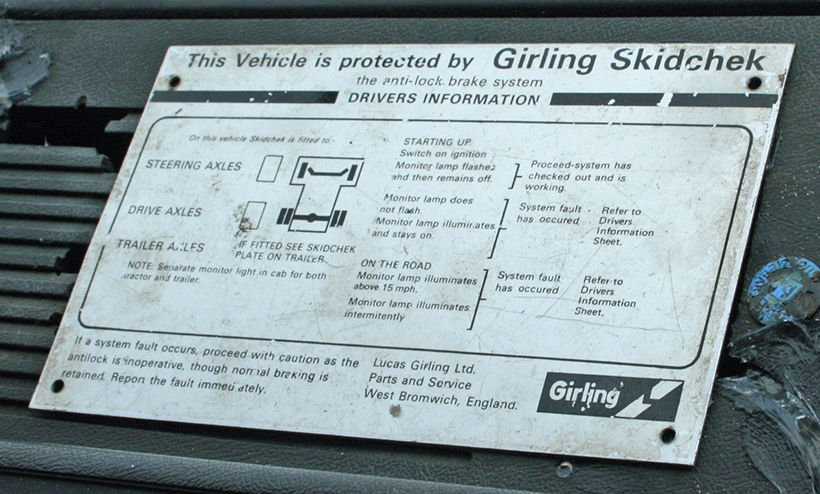
High spec for 1983 also included Girling Skidcheck, probably better-known today as ABS.
There was a choice of four engines – 2.0 four-cylinder or 3-litre V6 petrol, or 2.4 (four-cylinder) or 3.5 (six) diesel. Unsurprisingly, most commercial buyers chose the diesel version. Four wheelbases were offered – 120, 130, 145 and 156in. Broadly speaking, the A Series could be divided into two model lines – though as noted a moment ago, pretty-much any permutation was possible. The smaller A04XX models had 14in wheels and four-cylinder engines, whereas the larger A05XX and A06XX versions had a stronger chassis, 16in wheels and six-cylinder engines.
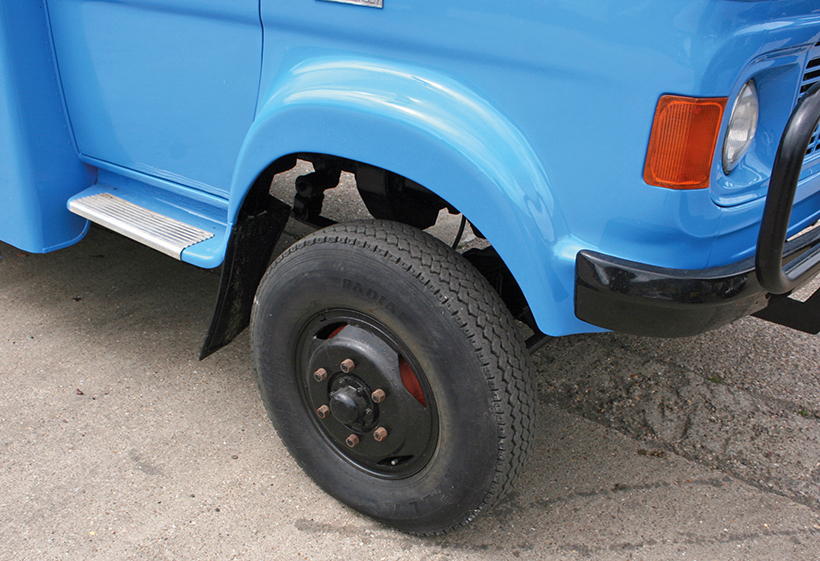
Larger versions of the A Series had 16in wheels, the smaller ones 14in.
For a year or two after launch, all went well. Ford dealers, who generally knew their customers well, marketed the A Series with enthusiasm, and many customers saw that, just as Ford had intended, an A Series might well meet their operational needs better. At the time, I was working for a builders’ merchants on the south coast. It was a fairly typical family-run local business, and our MD and the proprietor of the local Ford main dealership mixed, along with other influential business-owners, in the same (masonic) circles. Anyway, our car and lorry fleet was 100% Ford, and when one of the D Series 7½ tonners came up for replacement, we received an LWB dropside A Series. A key factor, I think, was that being narrower, the A Series might be easier to get into narrow building site entrances.
However, it quickly became obvious that, for us at least, the A Series’ disadvantages outweighed its benefits. Though it was narrower than a D Series, it was also slightly longer, which actually made it less manoeuvrable. As it was a dropside rather than a tipper, loose loads had to be shovelled off – with the 7½ tippers if the sand, gravel or whatever was loaded at the front of the body and the run was arranged so it was last drop, it could be tipped. Unsurprisingly, this made it highly unpopular with the drivers.

Front Cover of the launch brochure from 1973…
The biggest issue though, and this was one that completely marred the A Series reputation with most, was extreme reluctance to start from cold. It just would never go! Easy-start was used but eventually the thing seemed to become addicted to that and would never start without. Often, the only way of getting the thing to fire up was by towing it behind one of the other lorries…
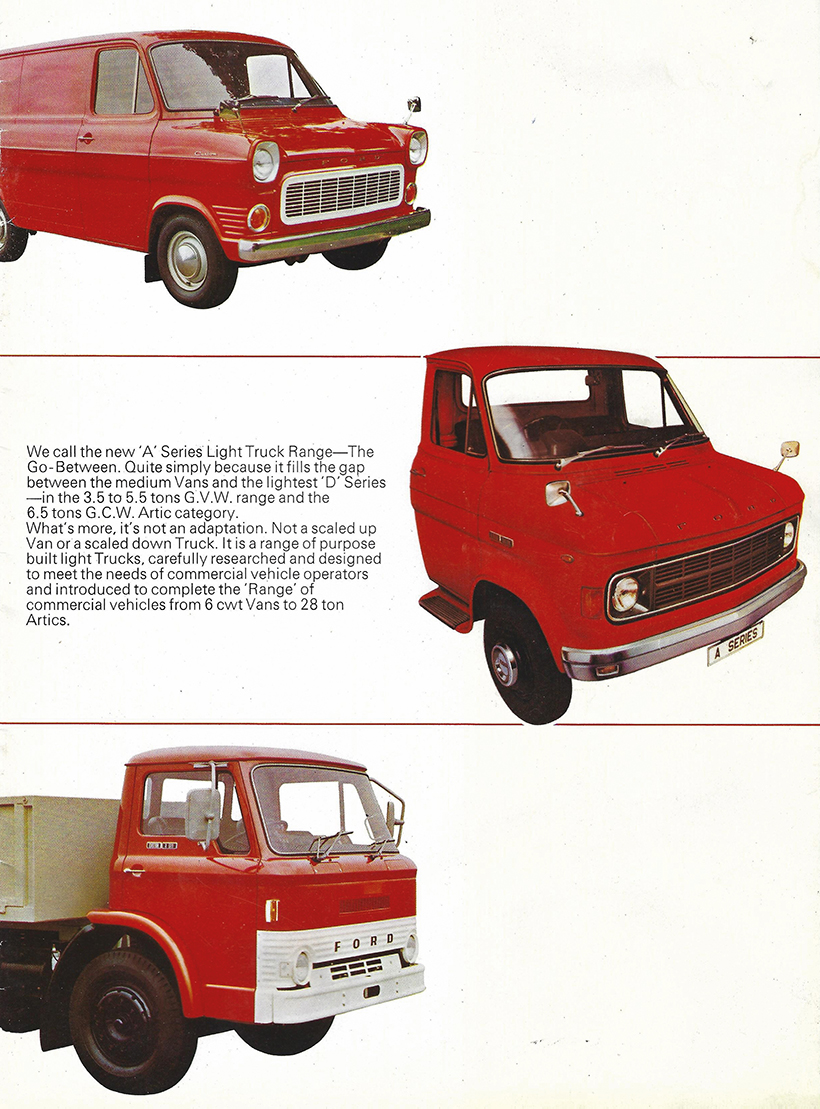
… and with the front cover flap lifted, the full story of where Ford saw the A Series in the marketplace.
This problem – and let’s face it, a lorry that won’t start in the morning isn’t a lot of use – ruined the A Series reputation, and though it remained in production for ten years, it never achieved anything like the expected level of sales. Most were dismantled for spares after a relatively short life – most of the core components were used on other vehicles – and very few have survived into preservation. Indeed, I know of only three and one of those, if I recall correctly, a recent re-import. A number are, however, still extant overseas, including on Malta.
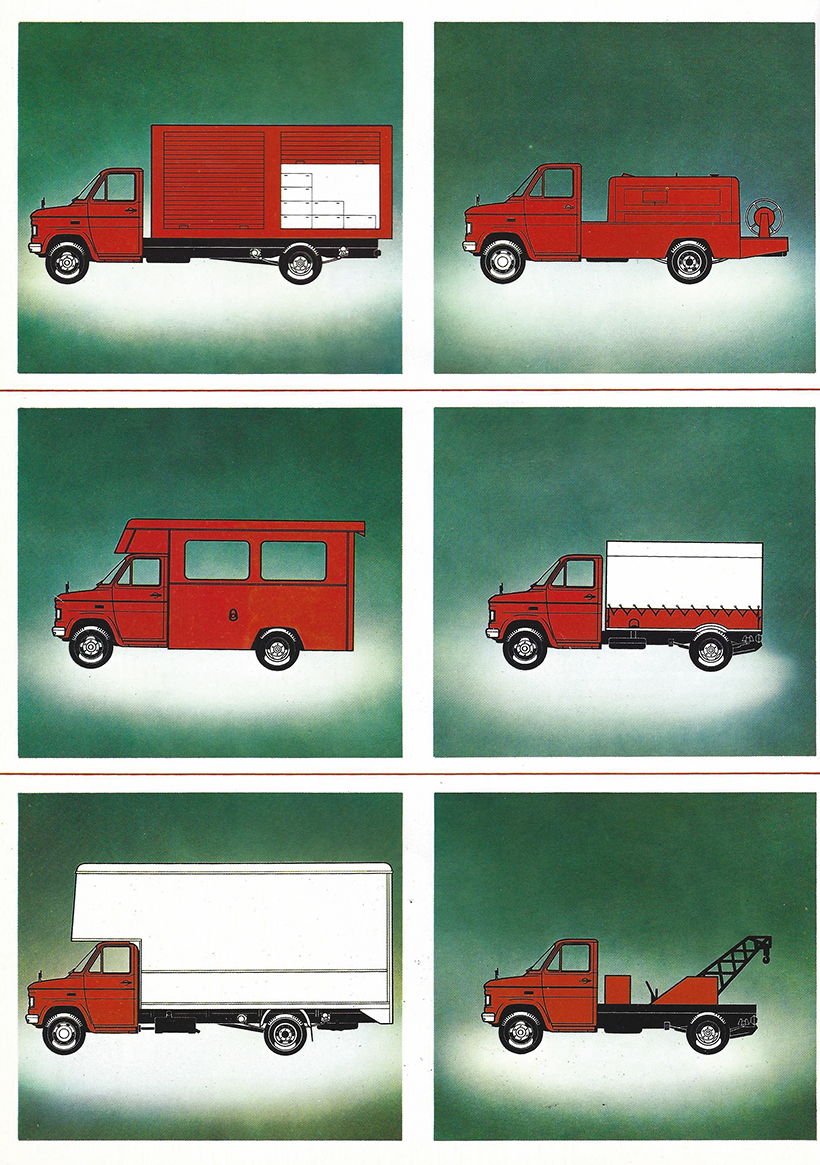
A wide range of body options from Ford and outside body-builders.
ITN’s A Series
One, however, that does survive is the A610 seen here, which was discovered in Smethwick about three years ago by our old friend and well-known lorry operator/enthusiast/preservationist Kevin Dennis. As you can see though, it’s a bit different from the average A Series, and we suspect it’s those differences which have allowed it to survive…
It’s a NAM Specialist Vehicles ‘Hillbilly’ four-wheel drive conversion. NAM stands for Newton Abbot Motors, a long-established East Devon Ford dealership, and a specialist in 4×4 conversions on light commercials for a wide range of customers including police and ambulance services who were increasingly in need of vehicles that could get them straight into places off the beaten track. Kevin thinks that “around 50” A Series were converted into Hillbillys.
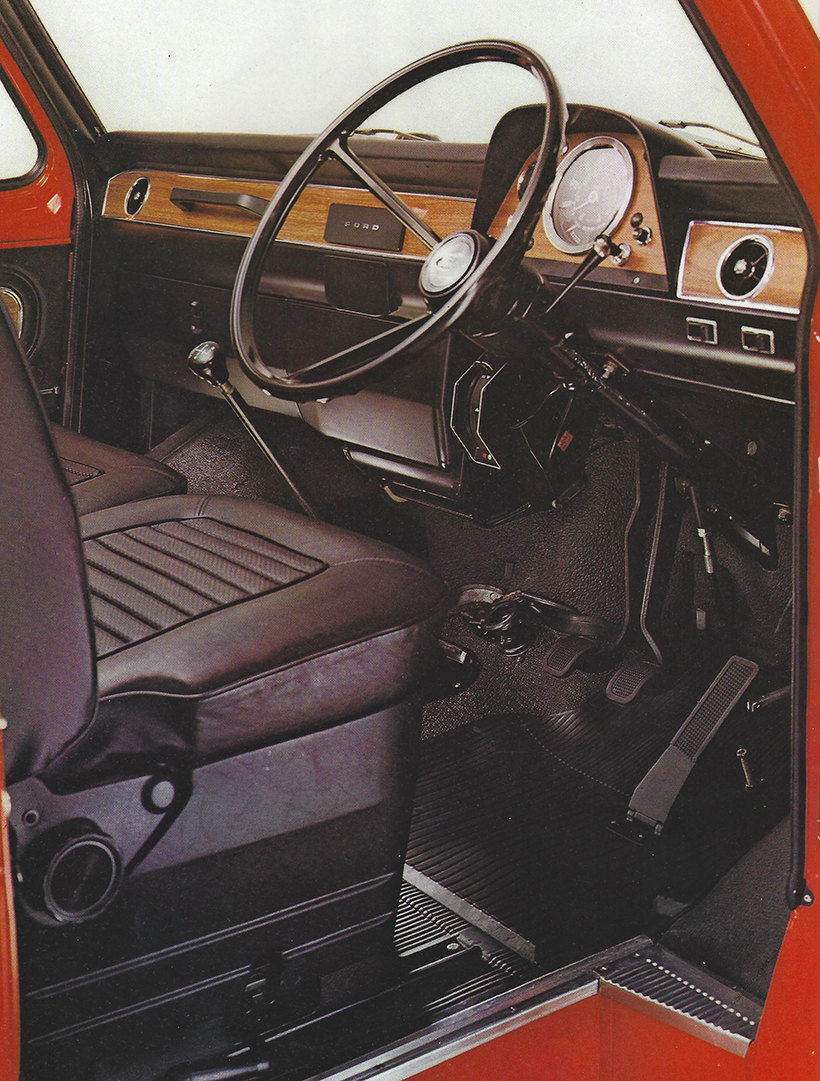
Cab interior was pretty-much pure Transit, but that was a plus-point.
As you can see, this one was built for ITN as an outside broadcast unit. It’s one of three similar vehicles delivered at the same time in January 1983 and, as was normal then for TV company vehicles, it was pretty-much a cost-no-object conversion, as the value of the kit being transported would massively outweigh that of the vehicle. Soundproofing was important obviously, and it would sometimes be necessary for an OBU to get to wherever it was going quickly, hence the 3.0litre petrol engine.
Kevin acquired the A610 about three years ago, after it had spent some time standing in a garden in Smethwick, awaiting a camper conversion that never happened. Kevin knows some of the vehicle’s history but not all, though he understands that following decommissioning by ITN it spent some time in Cornwall, possibly again awaiting camper conversion.
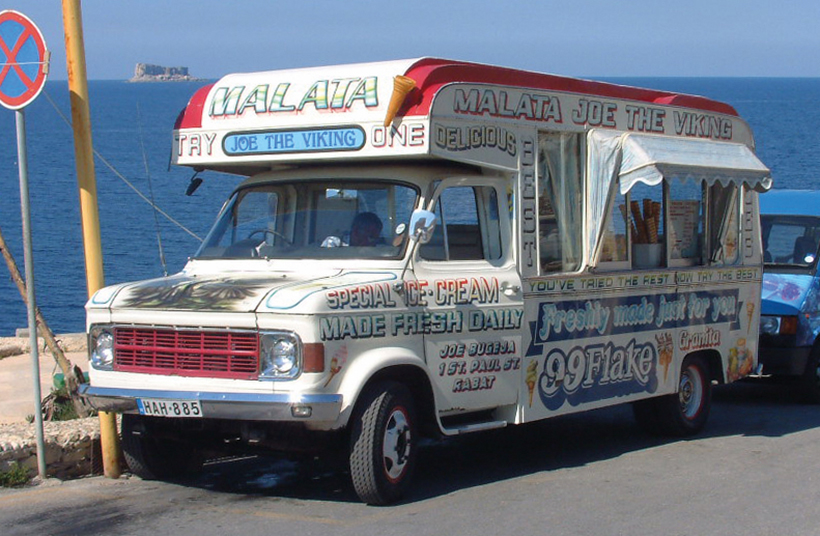
Though the A Series is now pretty-much extinct in the UK, a few are still in commercial service on Malta including this rather fine ice-cream van.
He describes its condition when purchased as “fairly rough”, and the interior is still essentially as withdrawn by ITN. There are a few signs inside of where they used it, including a couple of ‘coal not dole’ stickers from the 1984-85 Miners Strike plus one that appears to have come from the Notting Hill Carnival.
Externally, the front wings needed renewing, and a certain amount of external re-panelling was required. The repaint back into ITN livery was carried out in-house, using as a reference a photograph of one of its sister vehicles outside Lords Cricket Club in London. Sign-writing was applied by Kevin’s local specialist Fred Reed who, apparently, is “86 and not at all shaky.” The mechanical side was basically good and needed little more than a thorough service and dismantling, cleaning-up and freeing off of the brakes and other running gear, plus oil changes all through. A new set of tyres was, however, fitted as the originals were showing signs of deterioration through standing.
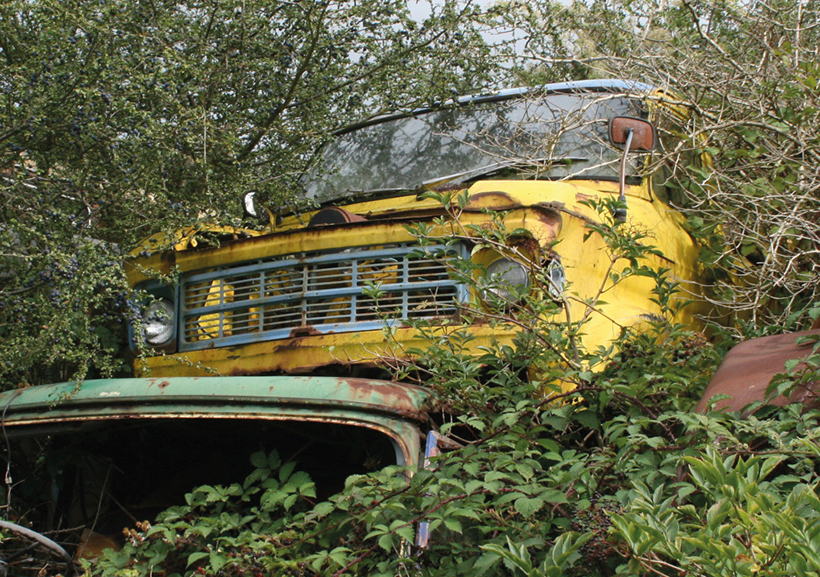
This, though, is how most UK-supplied A Series finished up here – spotted at Rush Green Motors a few years back.
And essentially, that’s about it; so far, this particular vehicle hasn’t been out and about much yet, and we hear a rumour that, though nothing has yet been confirmed, it might be heading for display in a specialist museum. That would be appropriate as this is clearly an extremely rare vehicle on three counts. It’s a surviving A Series, an NAM 4×4 conversion and it’s a preserved Outside Broadcast Unit. Any one of these would make it worthy of preservation; all three combined make it something very special.
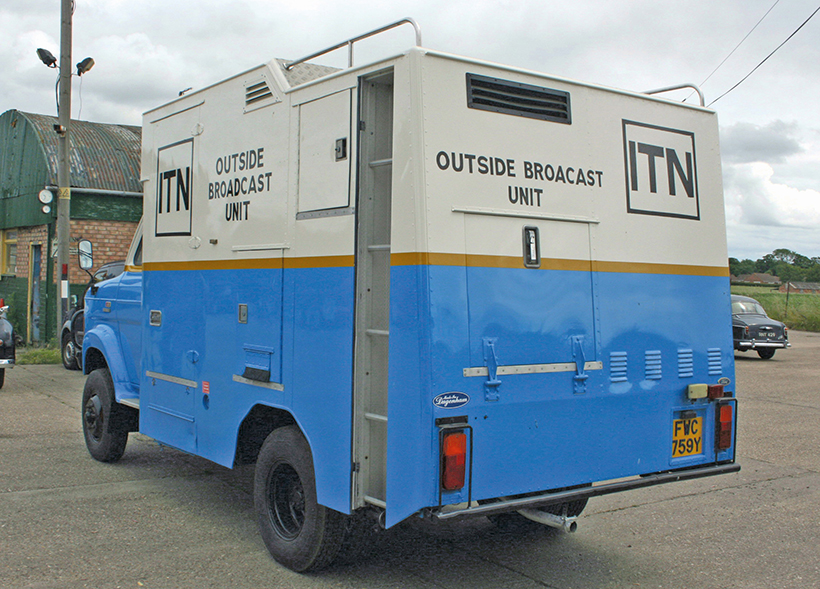
This feature comes from the latest issue of Classic & Vintage Commercials, and you can get a money-saving subscription to the magazine simply by clicking HERE



